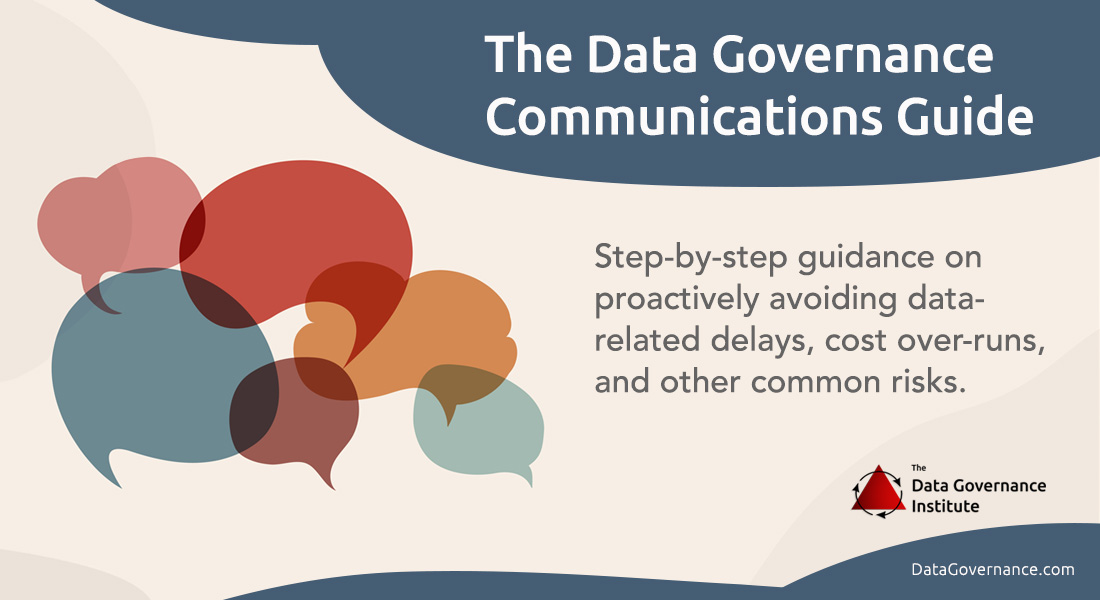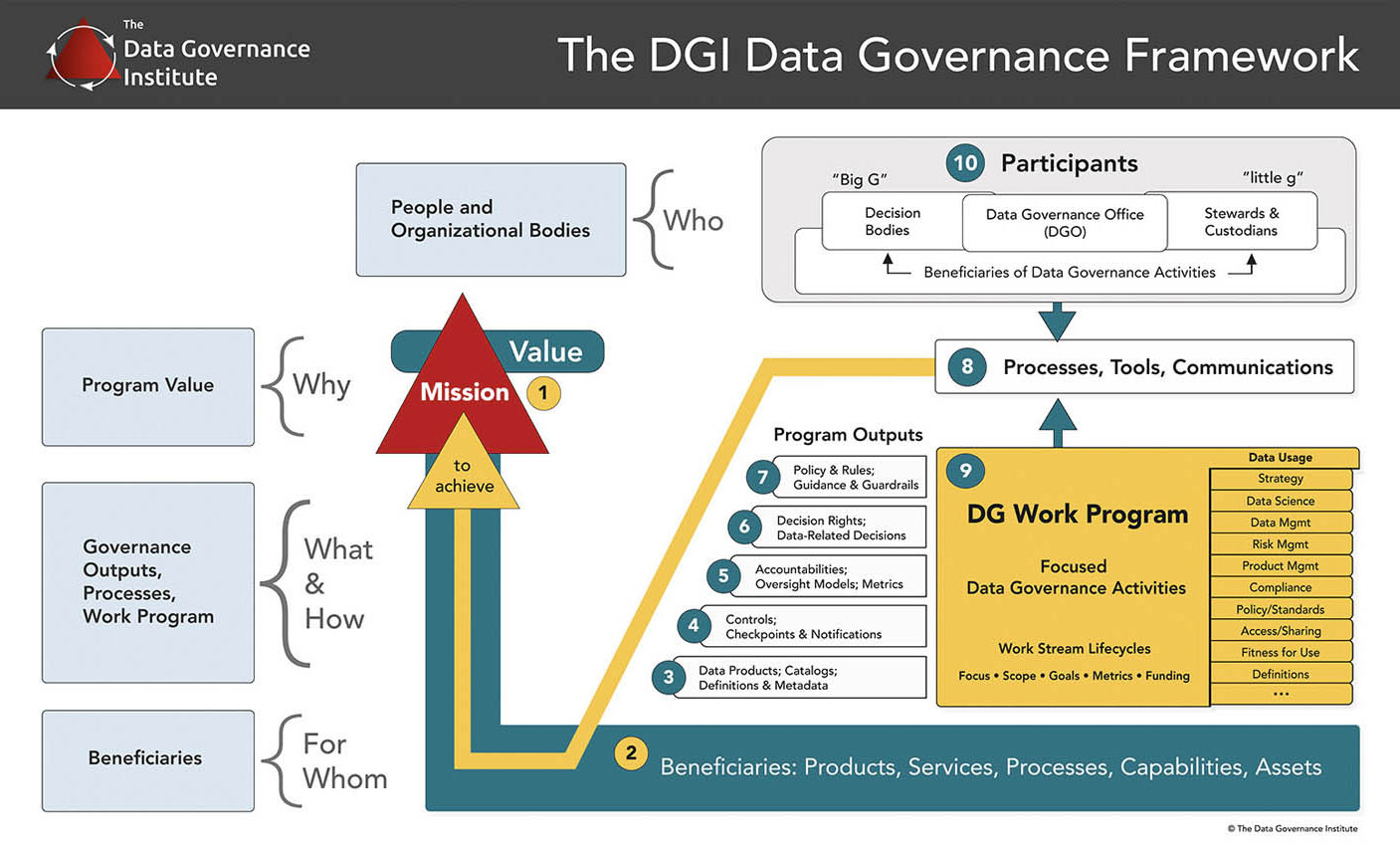The DGI Data Governance Communications Guide
The Data Governance Communications Guide provides step-by-step guidance on proactively avoiding data-related delays, cost over-runs, and other common risks encountered during the delivery lifecycles of products and services.

It’s not just for Data Governance professionals and Project Managers; it includes risk alerts, key activities, guidance, and project checklists that can be used by Business Analysts, Architects, Data Scientists, Security and Privacy specialists, and others to prevent inherent risks from becoming real problems.
How to Use the Communications Guide
How can you use the Data Governance Communications Guide to manage data-related risk within your IT projects? You have several options. Follow this five-step process to decide what’s best for you, your project, and your organization. When you’re done, you should have a good idea about:
- What problems you can solve, and risks you can manage.
- When in your projects you need to take action.
- Who from your extended project team should be involved.
- What communications steps and other actions will help you manage risk.
- What might happen if you don’t take action.
The Communications Guide
Certain types of IT projects are at high risk of being late or over-budget, hogging management attention, or delivering information that doesn’t meet business expectations. What type? Data-centric projects. Problems seem to surface anytime a system is capturing new data, or information is moving to the cloud, or personal data needs privacy controls, or downstream dashboards rely on the data being impacted by the project. Too often, teams face known information quality issues, or stakeholders are concerned about the quality of their reports or access to restricted information.
Why are these data-centric projects so prone to problems? Technical teams have a lot of training in working with other technologists, but sometimes they struggle with specialty teams that focus on data. Interdependencies between streams of work might not be obvious, and early assumptions about these specialists’ requirements and contributions can result in friction, delay, and unwelcome project adjustments.
The Fix
It’s easy to say that better communication is the solution. But communication about what? When? How do team members communicate about risks and requirements that may not be visible to them?
The Data Governance Communications Guide from the Data Governance Institute makes this easy. Using business-friendly language, it highlights “invisible” data-related risks that can be managed along a project life cycle. For each one, it identifies which specialist groups would typically be involved in proactively managing those risks so they don’t become issues. It spells out questions that can make “hidden” data-related requirements and project activities visible to the entire project team. It includes risk alerts, key activities, guidance, and project checklists. It is designed to be used by individuals or by entire teams, with focused materials for Project Managers, Data Governance teams, Business Analysts, QA teams, Architects, Privacy and Security teams, and other stakeholders.
A Note to Project Managers and Business Analysts
Business Analysts are typically charged with ensuring that all stakeholders’ requirements are represented in projects. But what about those “hidden” non-functional requirements that only seem to surface later in projects? The ones that deal with standardization of data, or avoiding data duplication, or access to data/documents, or privacy controls, or data quality testing? The Data Governance Communications Guide is designed around risks, requirements, and key activities that appear along project lifecycles. A module for Project and Program Managers serves as a master list of risk mitigation activities. Another is written from the perspective of Business Analysts, Information Quality, and Quality Assurance. It highlights key risks within each stage of a project, dilemmas they may encounter, suggested actions to manage risk, and checklists for scoping data-related requirements.
The Data Governance Communications Guide Chapters
- Program and Project Managers
- Data Stewards, Info / Data Governance Professionals
- BA, Information Quality, and Quality Assurance Professionals
- Data Architects
- Data Scientists and Analysts
- Information Security, Access Management, and Privacy Professionals
Individual Membership
- One-year membership for 1 person
Team Membership
One-year membership for up to 10 team members
Corporate Membership
- One-year membership for up to 25 team members
Use code DGI20 to save 20% on all membership levels through April 30, 2024!

